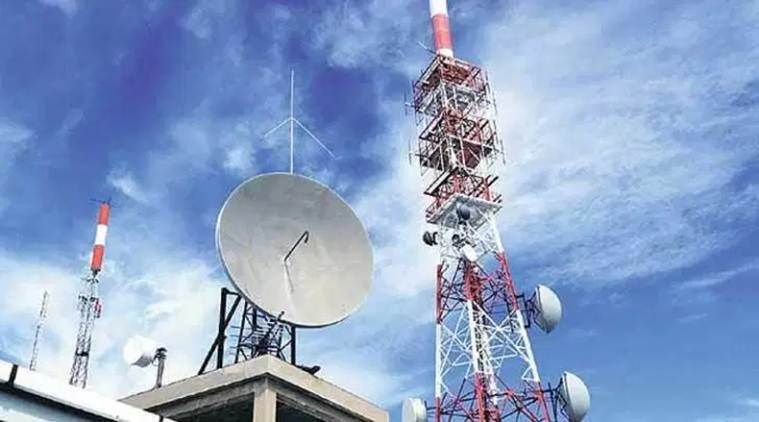Coronavirus: Lockdown triggers changes in viewership trends; data usage spikes delayed, extended
Surge in data usage since lockdown announced to tackle Covid-19.
 A comparative analysis of the data between March 10 and March 25 has showed that due to complete and partial lockdown effected by various governments, the volume of data usage spiked between 9 am and 11 am in the morning, and then after 4 pm until 10 pm.
A comparative analysis of the data between March 10 and March 25 has showed that due to complete and partial lockdown effected by various governments, the volume of data usage spiked between 9 am and 11 am in the morning, and then after 4 pm until 10 pm.
With the country under a complete 21-day mandatory lockdown and nearly 10 days of partial lockdown and work from home to limit the spread of coronavirus, the data usage patterns of users has undergone a shift, according to the initial data collected by the three major telecom companies. A comparative analysis of the data between March 10 and March 25 has showed that due to complete and partial lockdown effected by various governments, the volume of data usage spiked between 9 am and 11 am in the morning, and then after 4 pm until 10 pm.
“Earlier, we had data spikes between 8 and 10 in the morning and then between 5 and 8 in the evening, which are mainly office travel hours. Then, of course, the usage was high during weekends due to binge watching habits. Of late, however, that has changed,” a senior executive of a telco said.
During the initial period of the partial and complete lockdown, there was a huge surge in data usage, which prompted the telcos and industry body Cellular Operators Association of India (COAI) to issue appeals to over-the-top (OTT) and digital video streaming players to limit the streaming quality to standard definition from high and ultra-high definition.
“We saw an initial surge of up to 30 per cent in data traffic volume, which put a lot of strain on the network. With the transmission quality now limited, we are hoping that about 20-30 per cent of the bandwidth will now be free, which will be beneficial in reaching out to more consumers,” another senior executive said.
The shift in data usage pattern and the overall reduction in transmission quality has the telcos looking for extra access and backhaul spectrum to prepare for any eventuality in case the lockdown extends beyond the currently stipulated 21 days. Telcos are also preparing to seek the government’s permission for roving telecom towers in certain villages on the periphery of urban areas and metros if the situation does not improve even after the mandatory lockdown period.
Another telco executive, however, said they had been seeing continuous load on their network infrastructure instead of the isolated periodical spikes earlier, and that they expected the reduced transmission quality to have little to no impact on freeing up the bandwidth in the near term.
“Whatever network or bandwidth is freed up will be consumed, that has to be understood. The network infrastructure was anyway under pressure. So a relief as such we do not see in the near term, or until April 14 at least. Once more cell sites come up, the parameters can be checked again,” the executive said.
The work for reducing bit rate and limiting transmission quality was accelerated after Department of Telecommunications (DoT) Secretary Anshu Prakash was learnt to have personally called up heads of OTT and digital streaming players and sought their cooperation, sources close to the development told The Indian Express.
Mobile data users have not felt any problems even up until now in general as far as speeds are concerned, the telcos said. However, to prepare for an eventuality that the lockdown is extended beyond 21 days, the three major telecom operators and COAI have written to the DoT to allocate additional access and backhaul spectrum.
“The DoT has asked all operators to approach the Wireless Planning Commission. The allocation has various entanglements. The Supreme Court has various concerns about spectrum being allocated through an auction process.
“So the ministry is aware about the situation but they are being careful,” COAI director general Rajan Mathews told The Indian Express.
The required spectrum allocations are likely to be done within the next week after the matter is vetted by top legal counsels of the government, a senior ministry official said, adding that there may not be an immediate benefit to the end user in the near term even if the spectrum is allocated.
“We had asked for all this spectrum as a precautionary measure. We have also been seeking permission for temporary tower sites, which we call ‘cell on wheels’. Hopefully we will minimise any problems that could occur,” Mathews said.
Here’s a quick Coronavirus guide from Express Explained to keep you updated: Are smokers at high risk form coronavirus? | Can Vitamin-C prevent or cure coronavirus infection? | What exactly is community spread of coronavirus? | How long can the Covid-19 virus survive on a surface? | Amid the lockdown, what is allowed, what is prohibited?
- 01
- 02
- 03
- 04
- 05






























